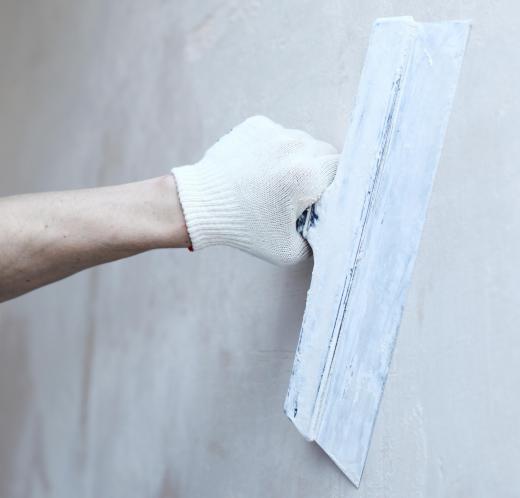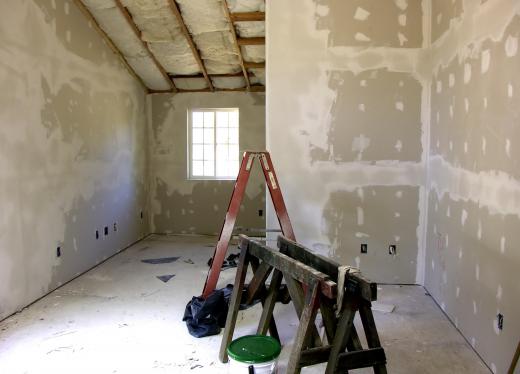Many homes built after the 1940s have drywall constructed walls and ceilings. This is done with standard sized drywall sheets butted together. The edges where the sheets meet are called drywall joints. These joints can occur both vertically and horizontally. Some finish work is typically necessary on the drywall joints to achieve a smooth surface.
Drywall is a type of wallboard that can be used for finishing interior walls and ceilings. It is often considered an easy and efficient alternative to classic plaster covered walls. This kind of wallboard is manufactured by sandwiching a layer of gypsum slurry between two sheets of heavy paper, which is then kiln dried.

In a drywall construction, a wall is framed with wooden supports, commonly called studs, which are evenly spaced apart. When the drywall is hung, the edges are matched and placed as closely together as possible. Each sheet is then attached to the wooden supports using either nails or screws. Occasionally, it is necessary to cut the drywall to fit in a space and these cuts are usually made in straight lines.

For this style of construction, the drywall joints are usually covered by drywall tape and joint compound, which is sometimes called drywall mud. The purpose of the tape is to improve the appearance, as well as strength, of the joint. Joint compound alone can be used for drywall joints; however, the chance of cracks increases greatly whenever large amounts of joint compound are applied. Drywall tape can be made from paper, fiberglass mesh, or even a paper and metal combination, which is sometimes used for corner drywall joints.

Many paper-taped joints begin with a very thin layer of joint compound followed by the tape. Subsequent thin layers of joint compound are then applied over the taped joint to feather out the surface. Light sanding is between coats is sometimes necessary.
Joint compound can be used on all joints and corners, as well as indentations caused by the nails or screws that attach the drywall to the supports. Using a float, a flat piece of metal with a handle attached on one side, allows the compound to be spread thinly over the surface to create a smooth finish. In general, the more experienced a person is in applying compound, the less sanding is necessary between coats.

Fiberglass mesh tape was developed in an effort to create easier ways to seal drywall joints. Most fiberglass mesh tape has an adhesive backing that requires no preliminary coats of compound. It usually requires a knife or scissors to cut through the mesh, while paper tape is usually torn easily by hand. The fiberglass material does give this tape additional strength.
